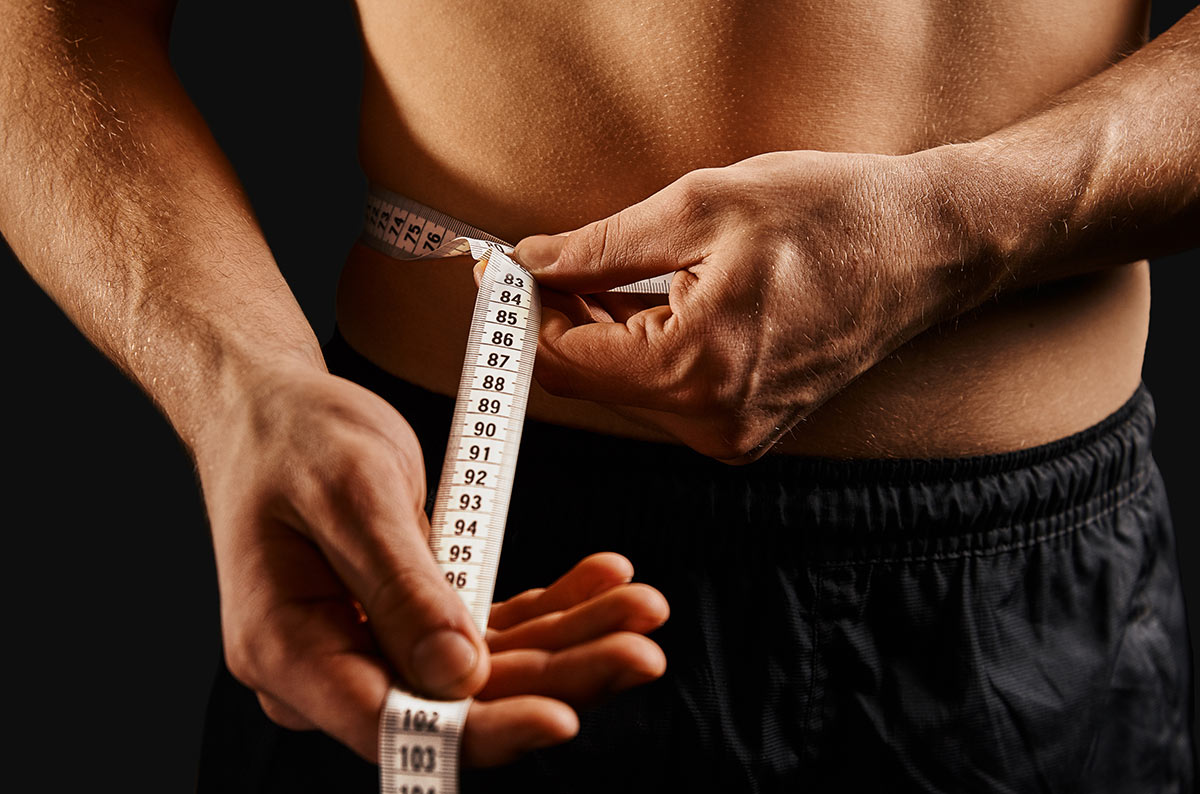This article is the second installment of the ten-part series on how to build lean muscle. Get yourself caught up with this Part 1. If you’re someone who wants to learn the fastest way to build lean muscle, apart from getting on a proper workout protocol, you need to be structuring your diet correctly.
Those who take the time to eat right are almost always going to have greater success and see the fastest way to build muscle because they won’t waste time going around in circles due to insufficient food.
Food can make or break your results because if you aren’t providing the body with enough raw materials for growth, how do you expect it to generate more lean muscle mass?
The answer: it won’t!!!
Let’s go over the key points that you should remember as you construct your diet to get muscle so you can succeed in achieving safe weight gain.
Step 1: Determine Your Body Composition
The first thing you should do is determining your body composition. Knowing your lean body mass makes figuring out your daily calorie requirements much more accurate since fat mass burns so few calories at rest.
Athletes who are quite lean to start with will have higher calorie needs and adjust their diet to put on muscle accordingly; otherwise, they will not be providing enough calorie intake to gain more size.
There are all kinds of body fat tests to measure body fat. I’m not the least interested in debating which ones are the best and most accurate. Just know for almost all methods, it’s best to perform your measurements:
- in the morning after an overnight fast
- after you go to the bathroom and
- before you eat anything or begin your daily activities.

Suppose you have access to someone trained to use skinfold calipers. This procedure uses calipers to measure the thickness of your subcutaneous fat — the fat underneath the skin — at specific body locations. It is my preferred choice of testing with athletes because it is very affordable, and measurements get taken quickly.
Most of the methods with the highest accuracies are not available to use in your home. What’s more, the ones available at a testing facility may be expensive.
If you don’t have someone trained to measure your body fat and dislike getting your fat pinched, you might consider circumference measurements. This measure uses circumference formulas for determining body fat. While a tape measure cannot directly measure body fat, there is a correlation between body circumferences, the relationship between body circumferences, and your body fat percentage. Overall, this method may be much more practical and accurate for private, in-home testing. You can find that test using the Critical Reload Calculator by clicking the floating ‘Calculator’ tab on your screen’s right.
Remember that all body fat testing methods only provide an estimate, and that accuracy is much less important than consistency and repeatability. Whichever way you chose, it’s essential to use the same method consistently.

So, if you measure your circumferences carefully, make sure you measure the same spot, with the same tape, and with the same amount of tension on the tape (taut by not tight). Doing so will ensure you get an acceptable body fat estimate – and, more importantly, a consistent assessment of your lean muscle gain that you can use to chart your progress.
Step 2: Determine Your Daily Calorie Expenditure Range
The next step in figuring out your diet to put on muscle is to establish your daily calorie expenditure once you have your body fat percentage. This way, you can eat enough to fuel your daily activities and then even more to build additional lean tissue.
To estimate your daily expenditure, you will use the following formula:
- BMR = 370 + (21.6 x lean mass in kg)
This number would represent how many calories you’d burn each day if you didn’t do anything other than lie in bed. It accounts for all the necessary processes required to keep your body alive.
So to this, you need to account for activity. So you will use the following activity multipliers.
- If you are sedentary (little or no exercise) = BMR x 1.2
- If you are lightly active (light exercise/sports 1-3 days/week) = BMR x 1.375
- If you are moderately active (moderate exercise/sports 3-5 days/week) = BMR x 1.55
- If you are very active (hard exercise/sports 6-7 days a week) = BMR x 1.725
- If you are extra active (very hard exercise/sports & physical job or 2x training) = BMR x 1.9

Most of you will fall in the range of moderately active to extra active, depending on how frequently you’re training and exercising, as well as how your daily life stacks up in terms of activity. Using the example above, an athlete with 150 lbs of lean muscle mass and is moderately active would multiply 1,838.8 x 1.55 = about 2,850 calories per day. This number of calories is what an athlete must consume per day to maintain their current body composition.
If you are looking to gain muscle mass, you will need to eat more than your maintenance calorie intake—a calorie surplus. Ideally, you should add between 250-500 extra calories per day to your maintenance intake number. This addition of calories will result in 0.5-1 lb of weight gain per week and help you stay lean as you build muscle. Any surplus greater than 500 calories can create additional fat mass, which is not productive to your goals.
So take the calorie intake you arrived at earlier and multiply by whatever factor best describes you.
Now you have your maintenance calorie intake. Don’t want to do the math? Check out the Critical Reload Calculator by clicking the floating ‘Calculator’ tab on your screen’s right.
To this, we also need to add your calorie surplus, which will enable you to build more lean muscle mass. Ideally, add anywhere from 250-500 calories per day, which will help you stay lean as you build muscle.
This calorie surplus will result in ½-1 pound of weight gain per week.
Step 3: Define Your Bioenergetics
Once you’ve arrived at this number, you also need to factor in your bioenergetics into the mix, which refers to which energy system your body is most going to use as you perform your chosen sport of choice.
Sports such as football, track and field (sprinting) will rely heavily on the immediate energy system and the anaerobic glycolytic system to produce high levels of energy quickly. Their drawback is they fatigue very fast.
Sports such as basketball, soccer, or hockey will rely more on the anaerobic glycolytic, possibly shifting toward the oxidative glycolytic as they require you to exercise for a slightly more extended time.
Finally, endurance sports such as cross country running or skiing will rely on the oxidative system, which will deliver energy at a lower intensity level for a lengthier period.

Closing Remarks
These are the first three crucial steps in constructing a good diet for muscle building, but this is only a general overview of what to eat to gain muscle. Next time, I’ll delve a little deeper into the specifics of that diet to learn more about the suitable types of carbohydrates, proteins, and fats, as well as macronutrient ratios, to help you fill in the blanks in this diet outline.
